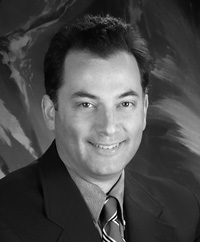We were standing in the northwest corner of Baker Ice Rink, admiring a painting of the man for whom the Princeton University building is named.
“You look like him,” quipped a man on the arena staff. Of course, I do not.
“I wish I were half the man he was,” I responded.
Hobart Amory Hare “Hobey” Baker, a son of Philadelphia socialites, was America’s first great hockey player. The Hobey Baker Memorial Award is given each year to the top college hockey player in the United States. It often is described as hockey’s version of college football’s Heisman Trophy (That award’s namesake, John Heisman, grew up in northeastern Pennsylvania).
Born near Philadelphia
Baker was born on Jan. 15, 1892 in Bala Cynwyd and named for an uncle who was then president of Jefferson Medical Hospital in Philadelphia.
Hockey was just one of the sports at which he excelled: football (“the blond Adonis of the gridiron”), baseball, swimming and diving among the others. He led Princeton to national championships in football (1911) and hockey (1912 and 1914).
That Baker was a great athlete there is no arguing: He was among the first nine inductees (and only American) to the Hockey Hall of Fame and entered the College Football Hall of Fame in 1975. But what truly set him apart was his sportsmanship.
“He set school scoring records that stood for more than half a century,” according to a 2010 Philadelphia Inquirer article. “Maybe more astonishing, despite being the primary target of every opponent, he was called for just one penalty in his three varsity hockey seasons. After each game, win or lose, he made it a point to visit the other team’s locker room and shake hands with each player.”
Sports Illustrated wrote this about Baker in 1991:
“With wavy blond hair and soft blue-gray eyes, he was among the handsomest of men, so disarming in appearance that his contemporaries at Princeton were not embarrassed to call him beautiful. Add to all this a humble manner, a noble character and what his biographer, John Davies, calls ‘a foreboding, a sense that Hobey was somehow playing out a Greek tragedy,’ and you have the stuff of literature.”
In fact, Baker was an inspiration for novelist F. Scott Fitzgerald, who entered Princeton when Baker was a senior and named a character Amory Blaine in his novel “This Side of Paradise.”
‘Electric personality’
In fall 2011, while starting my short-lived hockey magazine, I interviewed Guy Gadowsky, who was beginning his first season as head coach of Penn State’s men’s hockey team. He had spent the previous seven years as head coach at Princeton.
When I asked him about Baker, he eagerly related how one of his players, Kyle Hagel, had researched and spoken about Baker at the dedication of what Gadowsky dubbed “the shrine” to Baker in the arena lobby. (Hagel played for the Reading Royals in 2008-09).
“He was an incredibly electric personality,” Gadowsky said of Baker. “He did things like when he entered a room, he’d walk in on his hands.”
“He was just a tremendous athlete all the way around,” Gadowsky continued. “And as here at Penn State, you follow along the foundation and values and ethics that I believe Joe Paterno deserves so much credit for. I think part of that is at Princeton: following along what Hobey stood for, as well.”
After college, Baker played for a semi-pro team from Philadelphia. He played his final game on March 24, 1917, at Pittsburgh’s Winter Garden. He scored all three of his team’s goals, including the game-winner in the third overtime. The headline in the next day’s Pittsburg [as it was spelled at the time] Dispatch: “Hobey Baker and his hockeyists beat Pittsburg, 3 to 2.”
On April 6, the United States declared war on Germany. One month later, Baker enlisted as an Army pilot. He flew in an elite squadron of the French Air Force, painting his plane in Princeton’s orange and black. The French awarded him the Croix de Guerre for his superior conduct under fire.
A little more than one month after Armistice Day, he was engaged to be married and due to return to the United States when he offered to test fly a recently repaired airplane. He crashed shortly after takeoff, dying in an ambulance on Dec. 21, 1918, in Toul, France.
A more innocent time
He was 26 but had built a legacy that endures a century later. Baker was the reason why I wanted to see Baker Ice Rink, which opened in 1923. With its stone walls and wood plank cathedral ceiling, Baker Ice Rink looks like a Gothic church. It is the second-oldest Division I rink in the United States, and with seating for 2,092 is intimate from any vantage point.
Princeton plays in the ECAC conference; the night prior to our visit, the Tigers took on defending national champion Union College. But this isn’t major-college sports as we have come to know it in 2015.
Tickets were $10 for adults, $6 for children for seats that consist of metal benches with seat backs. Parking was free. There was a lone concession stand; there were no merchandise sales, no dasher board advertisements.
Baker Ice Rink harks back to a more innocent time in the world of sports.
It’s the House that Hobey Built.




